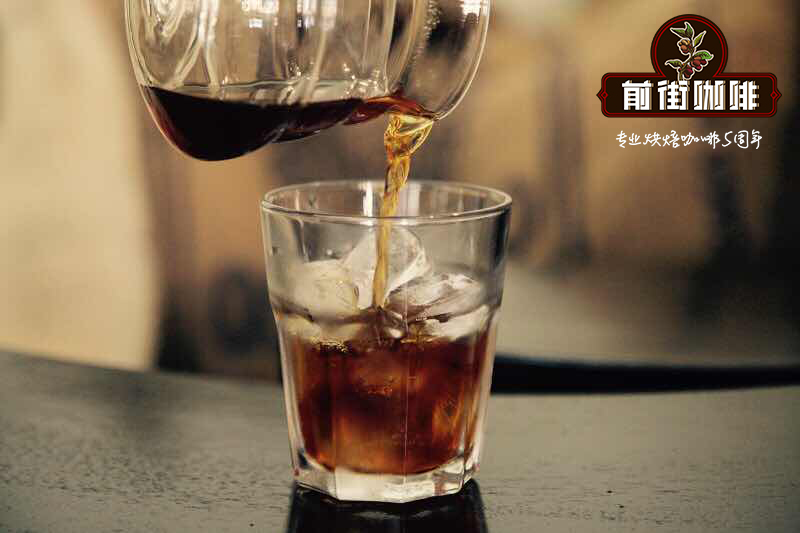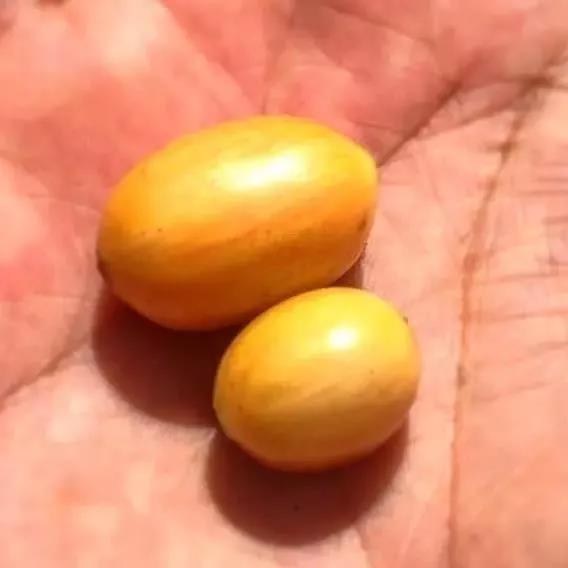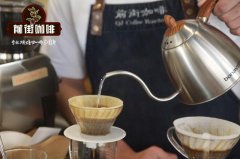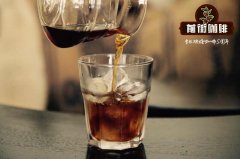How to taste the flavor of coffee varieties? Differences in flavor performance of varieties in different countries and regions

Professional coffee knowledge exchange more coffee bean information please follow the coffee workshop (Wechat official account cafe_style)
I believe that many enthusiasts will encounter such a situation. I buy a bag of beans with citrus and peach flavor, but I can't taste them, so I suspect it's the beans, the cooking, or the senses.
The flavor of coffee bothers many students. How can I not drink so many flavors on the flavor table? after all, not everyone has professional feelings, or I drink not peach flavor, but plum flavor. The reason for this difference is the different cultural life and diet regions, the different descriptions of the same cup of coffee, so coffee taste, the most important thing is communication. Tell me how you feel about this bean, different cultures, different experiences, different descriptions, but this kind of communication can be a lot of fun-isn't it?
The aroma of coffee is felt by our sense of smell, and the aroma is definitely thousands of times more complex than the taste. Usually we say that coffee has the taste of apple is actually felt by the nose. There are many descriptions of fruits in the flavor wheel: strawberry, blueberry, raspberry, jasmine, grapefruit, lime, cherry, grape, peach, black tea.
We can smell a smell, taste a taste, but maybe we can't describe it very accurately. The flavor wheel can classify all the taste systems perceived by human beings, corresponding to the smell system is the smell wheel, with the practice of the two, we can clearly sense the slightest difference among all the odors.
When it comes to aroma and taste, this can be said to be the most similar place between coffee and wine. Like wine, coffee has a unique aroma due to the influence of different soils and roasting processes. When it comes to the roasting process, the quality of coffee is equal to that of wine brewed in the cellar, and the roasting temperature will affect the quality of the coffee, just as the cellar will affect the final taste of the wine. Coffee tasting is the same as tasting red wine, distinguishing between local customs and varieties, and coffee bean varieties show different flavors in different countries and regions.
Take species as an example, there are many kinds of coffee in every corner of the world. Coffee beans grown in different soils have different aroma and taste. Like grapes, different soil is suitable for different coffee trees, and elements such as soil, sunlight and other climate can affect the aroma, taste and quality of coffee.

Before the entrance, use your nose to appreciate the aroma of the coffee. Here you can not hesitate to borrow wine tasting words, first smell your coffee to see if it has aroma, such as flower, fruit or wine, whether there is abnormal rotten soil, mildew, volatile sour or spicy taste, these are the taste produced by poor quality or improper preservation of coffee beans. If it is a healthy coffee, then in the aroma can give you a lot of enjoyment. You can not hesitate to use the wine tasting system to evaluate a coffee, looking for fruity, floral, botanical, roasted and spicy aromas. As the heat of coffee helps spread the aroma, you can easily capture the rich and complex aroma of coffee.
This paper briefly introduces several common coffee varieties, which have some flavor characteristics in different regions and can also be used as a reference for the description of flavor terms:
Rose summer variety (Geisha)
Panama (Geisha): strawberry (strawberry), jasmine (jasmine floral), mint (bergamot), caramel (caramelly), chocolate (chocolate), grapefruit (grapefruity), plum (plum), citrus (citrus-orange)
Costa Rica (Geisha): sweet (sweet floral), jasmine (jasmine), citrus (citrus-orange), caramel (caramelly), chocolate (chocolate)
Colombia (Geisha): pomegranate (grave), vanilla (vanilla), chocolate (chocolate), caramel (caramelly), citrus (citrus)
Geisha: lime (lime juice), vanilla (vanilla), jasmine (jasmine floral), sweet grapefruit (sweet grapefruit), rose tea (tea-rose), strawberry (pine-strawberry)

Iron pickup (Typica)
Peru (Typica): nutty (nutty), milk chocolate (milky chocolate), herbs (herbal-floral), pears (pear-fruit), vanilla (vanila), caramel (caramel), apples (apple-like), honey (honey-like), peach tea (peach tea), ripe oranges (ripe orange), jasmine (jasmine hints)
Typica: almond peel (almond skins), silky taste (silky mouthfeel), brilliance (brightness), red malic acid (red apple acidity), roasted peanuts (roasted peanut), hazelnut (hazelnut), orange peel (orange peel), melon (melon), sweet grape juice (sweet spice grape juice)
Typica: Apple (apple), cocoa powder (cocoa powder), caramel (caramel), BlackBerry (black berry), orange white hair (orange pekoe tea), honey (honey)
Mexico (Typica): floral (floral), hazelnut (hazelnut), mango sweet (mango sweetness), peach and apricot (peach-apricot), vanilla (vanila), unripe apple (malic)
Panama (Typica): chocolate (chocolate), apple (apple), peach (peach), plum (plum), floral (floral), caramel malt (caramel-malt), lemon (lemon), buttery taste (buttery mouthfeel)
Costa Rica (Typica): soft chocolate (soft chocolate), honey (honey-candy), apple (apple), weak citrus acid (less citrus acidity), white grape (white grape), orange (tangerine), apple juice (apple juice), nectar (floral honey), hibiscus flower (hibiscus floral)

Bourbon (Bourbon)
Brazil (Bourbon): cocoa powder (cocoa powder), orange (orange), vanilla (vanila), almonds (almond), chocolate (chocolate), caramel (caramelly), yellow sugar (brown-sugar), dried mango (dry mango), peach (peach)
Nicaragua (Bourbon): milk chocolate (milky chocolate), maple syrup (maple syrup), walnut (walnut), peach-apricot aroma (peach-apricot), almond (almond), honey (honey), malt (malty)
Panama (Bourbon): floral (floral), cherry fruits (cherry-fruited), vanilla (vanilla), malt (malty), caramel (caramelly), chocolate (chocolate)
Tanzania (Bourbon): caramel (caramelly), sweet fruit (very sweet fruit), brown sugar (brown sugar), vanilla (vanilla), chocolate (chocolate)
Bourbon: caramel (caramelly), toast (toasted bread), chocolate powder (chocolate powder), apple (apple), plum (plum)
Costa Rica (Bourbon): sugar (sugar sweetness), roasted almonds (roasted almond), hazelnut (hazelnut), peanut (peanut), BlackBerry (black berry), cinnamon (cinnamon), malt (malt), sweet tobacco (sweet tobacco flavor)

Marago Gippe (Maragogype)
Nicaragua (Maragogype): lemon (lemon), cinnamon (cinnamon), cola (cola), floral (floral), citrus (citrus), melon (melon)
Maragogype: strawberries (strawberry), toast (toasted bread), vanilla (vanilla), raisins (raisin), flowers (floral), plums (plum), hibiscus flowers (hibiscus)

Kent (Kent)
India Malabar (Kent): spicy aroma (pungent spicy), tobacco (pipe tabacco), caramel (caramelly)
Pacas (Pacas)
El Salvador (Pacas): sweet peach (sweet peach), vanilla (vanilla), flower (floral), jasmine (jasmine floral), caramel (caramelly), orange (orange), lemon (lemon), melon (melon)
Honduras (Pacas): bergamot (bergamot), Chinese fir (cedar), honey (honey), peach (peach), lemon (lemon), grape (grape), watermelon (watermelon), apple (apple), dried grape (raisin)
Pacamara (Pacamara)
Pacamara: caramel (caramelly), honey (honey), vanilla (vanilla), flower (floral), peach (peach), hazelnut (hazelnut), jasmine (jasmine)
Nicaragua (Pacamara): chocolate (chocolate), caramel (caramelly), orange (orange), maple syrup (maple syrup), honey (honey), raspberry (raspberry), cinnamon (cinnamon), apricot (apricot)

El Salvador (Pacamara): oranges (orange), vanilla (vanilla), lemons (lemon), chocolate (chocolate), apricots (apricot), lemonade (lemonade), limes (lime), flowers (floral)
SL28
Kenya (SL28): malt (malty), caramel (caramelly), almond (almond), flower (floral), vanilla (vanilla), citrus (citrus), apple (apple), peach (peach)
SL34
Kenya (SL34): caramel (caramelly), butterscotch sugar (butter scotch candy), orange (orange), grape (grape), plum (plum)

Catuai (Catuai)
Panama (Catuai): Apple (apple), peach (peach), chocolate (chocolate), apricot (apricot), mango (mango), almond (almond)
Catuai: chocolate (chocolate), cinnamon (cinnamon), plum (plum), honey (honey), lemon (lemon), apple (apple), grape (grape)
Brazil (Catuai): flower (floral), watermelon (watermelon), peach (peach), grapefruit (grapefruity)
Costa Rica (Catuai): pear (pear), floral scent (floral), mango (mango), caramel (caramelly), lemon grass (lemon grass), chocolate (chocolate), Chinese fir (cedar)

Mundo Novo
Brazil (Mundo Novo): nuts, malty, chocolate, banana skin, sweet tobacco, tangerines/oranges

In fact, as long as we drink more different varieties of coffee, learn more about coffee knowledge, and then practice and communicate repeatedly, it will be easy to drink one or two flavors!
Important Notice :
前街咖啡 FrontStreet Coffee has moved to new addredd:
FrontStreet Coffee Address: 315,Donghua East Road,GuangZhou
Tel:020 38364473
- Prev

2018 production season Brazil Sun Chocolate how to drink _ Brazilian San Antonio Chocolate Coffee Story
Professional coffee knowledge exchange more coffee bean information please follow the coffee workshop (Wechat official account cafe_style) 018 new production season Brazilian coffee sun Chocolate arrived this time, we use deep baking to show his rich chocolate flavor this bean is the sales leader of Shiguang Co., Ltd. in Japan, many Japanese girls like to use this coffee on Valentine's Day.
- Next

Brazil Hilado boutique yellow bourbon half-sun coffee flavor characteristics Brazilian COE coffee bean story
Professional coffee knowledge exchange more coffee bean information please follow the coffee workshop (Wechat official account cafe_style) BRAZIL Brazilian coffee Brazil is the world's largest coffee producer and the second coffee consumer in the world. Because of the vast territory of Brazil, each farm has a unique fragrance. Of course, it also has the taste of Brazilian standard. Not only the coffee quality standard in Brazil
Related
- Detailed explanation of Jadeite planting Land in Panamanian Jadeite Manor introduction to the grading system of Jadeite competitive bidding, Red bid, Green bid and Rose Summer
- Story of Coffee planting in Brenka region of Costa Rica Stonehenge Manor anaerobic heavy honey treatment of flavor mouth
- What's on the barrel of Blue Mountain Coffee beans?
- Can American coffee also pull flowers? How to use hot American style to pull out a good-looking pattern?
- Can you make a cold extract with coffee beans? What is the right proportion for cold-extracted coffee formula?
- Indonesian PWN Gold Mandrine Coffee Origin Features Flavor How to Chong? Mandolin coffee is American.
- A brief introduction to the flavor characteristics of Brazilian yellow bourbon coffee beans
- What is the effect of different water quality on the flavor of cold-extracted coffee? What kind of water is best for brewing coffee?
- Why do you think of Rose Summer whenever you mention Panamanian coffee?
- Introduction to the characteristics of authentic blue mountain coffee bean producing areas? What is the CIB Coffee Authority in Jamaica?

